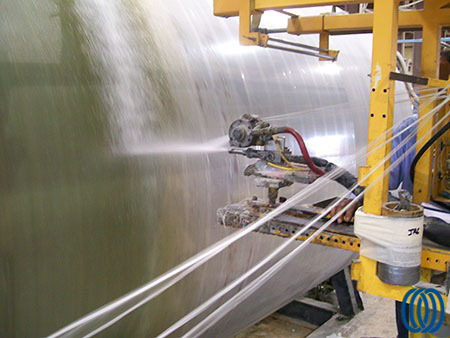If you looked into an autobody repair shop and saw an employee working on a car with a jack hammer, you’d probably think twice about having your car fixed at that shop.
In the fiberglass fabrication world, some people feel the same way about using chopper guns to make things out of fiberglass. They view chopper guns as crude, easily misused machines that create only low quality fiberglass laminates. There is some truth to that because like all tools, if they are used in the wrong way, or in the wrong application, then the parts they produce will be sub-par. However, used correctly and in the right application, they are absolutely the right tool for the job.
Chopper guns for fiberglass fabrication became common in the 1960s. They combine two elements of fiberglass fabrication into one process, by applying fiberglass strands and resin to a mold surface simultaneously, faster than these elements can be applied manually. The thickness and resin-to-glass ratio of the resulting laminate is controlled by the operator. Chopper gun laminates still must be manually compacted, voids removed, and inspected by skilled technicians, a step that is often overlooked by lower tier fabricators.
For part of the fiberglass fabrication process, Diamond Fiberglass uses chopper guns made be Magnum Venus, one of the largest manufacturers of fiberglass fabrication equipment. These chopper guns are specially set up for our tooling and their operation is always managed by experienced technicians. To keep them functioning properly, they are maintained at regular intervals. The fiberglass tanks and pipes we manufacture that incorporate chopper guns in the fabrication process are always excellent quality and surpass stringent quality standards.

When used by trained technicians, chopper guns produce quality laminates with speed and efficiency. At Diamond Fiberglass, our chopper gun technicians rely on constant feedback from large digital readouts that provide instant data on the all-important resin to fiberglass ratio. However, we never use chopper guns when their use would not produce high quality laminates, or when specifications call for manual lamination, such as corrosion liners on FRP equipment to be used for hydrochloric acid.
For more information please contact diamondfiberglass.com, diamondservices.com, or mvpind.com
